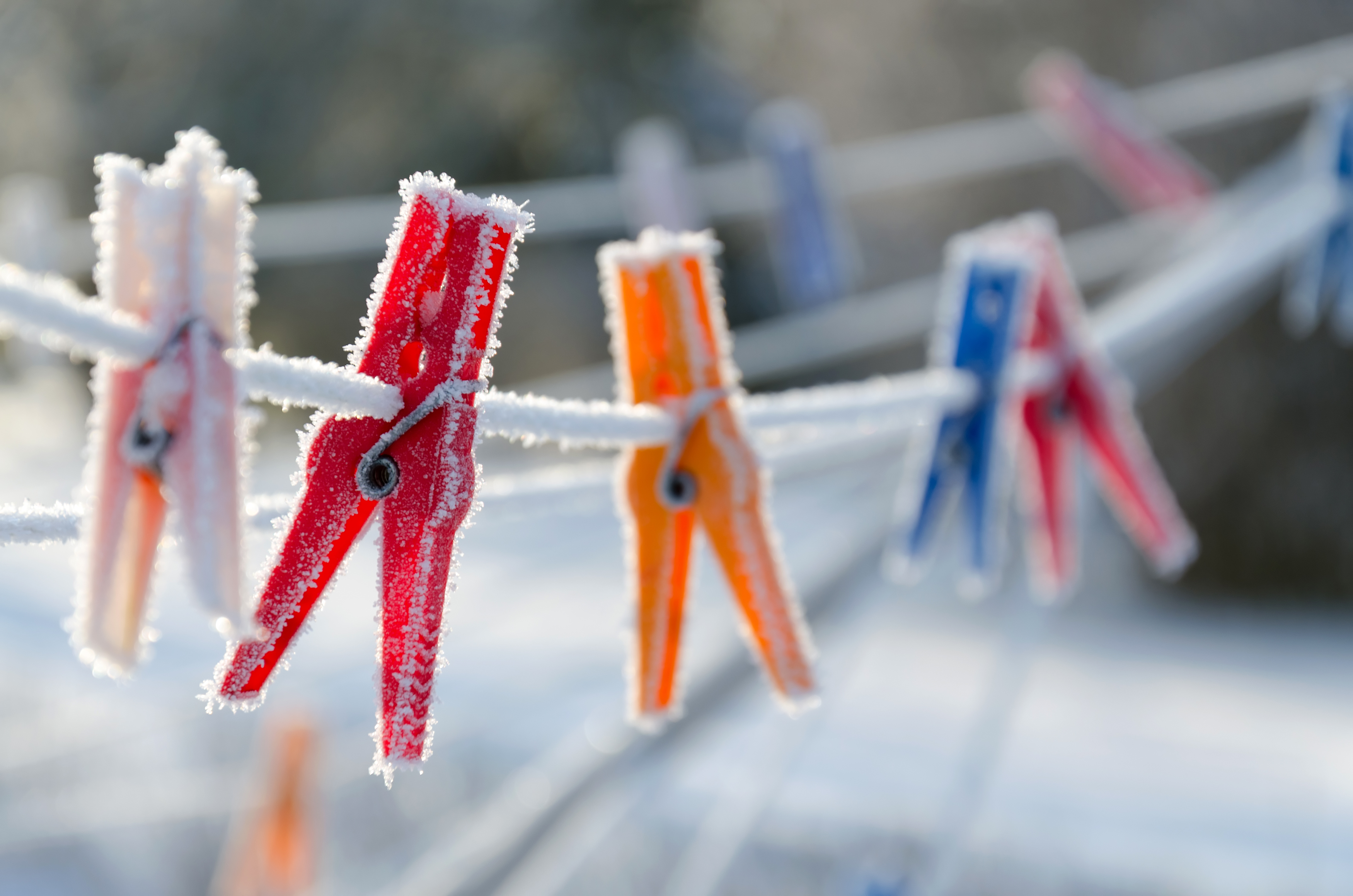Send your question to Umbra!
Q. I saved a noticeable amount of energy this summer by hanging out my clothes to dry. Can I continue to do this over the colder months?
Colleen H.
Chicago, Ill.
A. Dearest Colleen,
Does anything have a higher reward-to-effort ratio than a clothesline? For the cost of a simple rope and a handful of clothespins, plus a few minutes per laundry load, you get a discount on your electric bill (up to $25 per month, according to advocacy group Project Laundry List), a reduction in greenhouse gas emissions (residential dryers are responsible for 32 million metric tons of CO2 per year), and that delightful, fresh-air scent of line-dried skivvies. I don’t blame you for wanting to keep that going as the mercury dips.
Unfortunately, many people equate clotheslines with their white shoes – a summer-only item to be retired after Labor Day. But you don’t have to rely solely on the clothes dryer this winter. Cold-season air-drying takes a little more thought, but it’s definitely possible.
First, let’s take a look at the science of drying clothes on the line (Physics of Line Drying 201 was one of my favorite college courses!). What concerns us here is evaporation rate – how quickly the water in your clothes turns to vapor and floats away from the fabric. As you’ve probably already discovered from your summertime laundry days, Colleen, several factors play into this: temperature, wind speed, and humidity. The warmer the air, the more quickly water evaporates. Wind helps whisk vapor molecules away, further speeding the process. And the lower the humidity, the better, as air that’s already saturated with water vapor can accept less of it from your flapping clothes.
Not to state the obvious or anything, but in winter drying, our biggest issue is plunging temperatures. If it’s not too cold – sunny and 45 degrees, with a light breeze, let’s say – it will take longer for water to evaporate than it does in July. But evaporate it will, given enough time swinging in the breeze.
And if it’s colder than 32 degrees F, the point at which your freshly laundered dungarees turn into popsicles? Clothes can still dry outside. For this we must thank sublimation – when a solid (ice, in this case) changes directly to a gas, skipping the liquid phase. What this means for your laundry in theory: Wet jeans on the line in a Chicago January will freeze stiff, then the ice will eventually sublimate into water vapor. Tadaa! Dry clothes!
Like so many things, though, results will vary in practice. I don’t have any personal experience with subfreezing clothes-drying, but my research has turned up plenty of anecdotes from people who have. It’s a viable option for many, though it might take too long to be worthwhile for you. My advice: Try it and see how it works in Chicago’s famously humid, bitterly cold winter. Watch the weather and try to time your laundry days for the most advantageous hang-drying conditions: You’ll want to target warmer, sunnier, windier days and avoid those bone-chillingly humid ones. If you’re experimenting with especially frosty conditions, wear gloves to protect your hands and pre-attach the clothespins to each item to speed hanging time. And if after all that, your duds are still damp? You can always toss them in the dryer on “air fluff” to finish them off, which is still an improvement over running the entire drying cycle.
I’d be remiss if I didn’t also point you to indoor drying racks for cold-weather laundry days. Pros: no more frozen fingers; drying laundry will humidify your home (combating the common winter problem of dry air and its lamentable side effect, dry skin); and you can wash your socks even with an unfavorable forecast. Cons: Your laundry will draw the energy it needs to change water to vapor from your indoor air, slightly lowering the heat inside; and if you have a small space, it will be temporarily cluttered with an obstacle course of racks. If you’re interested in this route, check out this past column for an overview of your options, from retractable clotheslines in the basement to collapsible racks that can be tucked away when not in use.
Best of luck with your experiments this winter. And may I suggest that you use a fraction of your utility savings on some hot cocoa? I’ll bet a nice, steaming mug will taste particularly delightful on your laundry days to come.
Subliminally,
Umbra



